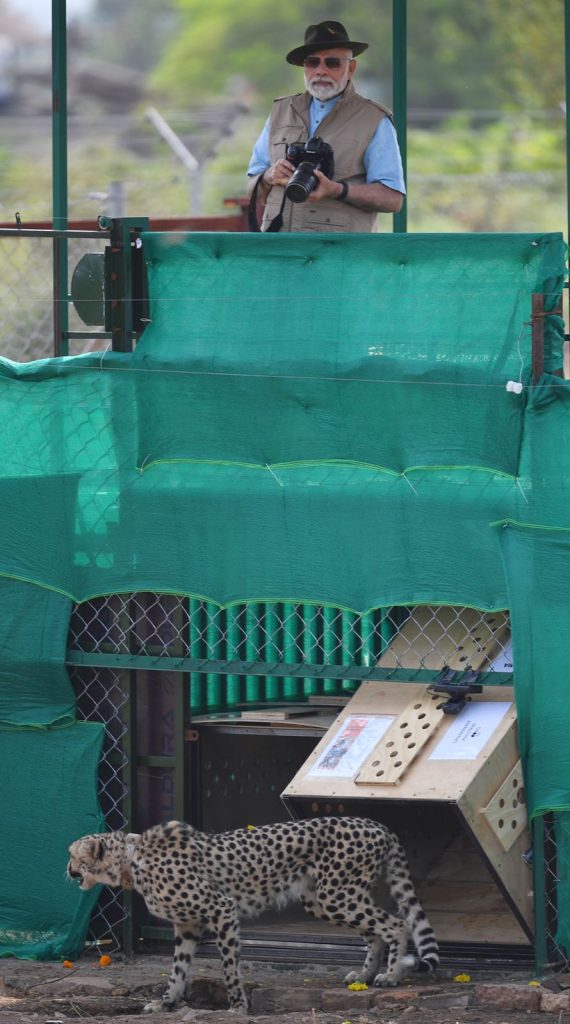Cheetahs run the wild in India again

By Our Special Correspondent
New Delhi, September 17: In 1947, the Maharaja of Korea Pratap Singh Deo had proudly stood beside three dead Cheetah after hunting them down as part of the adventure sports promoted by the Britishers in the country. Finally, eight Cheetahs have come back to India after going extinct as part of a plan that was conceived during the UPA government, but executed by the Narendra Modi-led NDA administrations at the Centre.
Modi on Saturday released wild Cheetahs in Kuno National Park.
“Cheetahs – brought from Namibia – are being introduced in India under Project Cheetah, which is world’s first inter-continental large wild carnivore translocation project. Out of the eight Cheetahs there are five female and three male Cheetahs,” said the government in an official statement.

Cheetahs were released at two points in Kuno National Park. The Prime Minister also interacted with Cheetah Mitras, Cheetah Rehabilitation Management Group and students at the venue.
The Centre is working on the plan to revitalise and diversify India’s wildlife and its habitat.
The cheetah was declared extinct from India in 1952.
“Cheetahs will help restore open forest and grassland ecosystems in India. This will help conserve biodiversity and enhance the ecosystem services like water security, carbon sequestration and soil moisture conservation, benefiting society at large,” added the government.
The government is hoping for enhanced livelihood opportunities for the local community through eco-development and ecotourism activities.
The coverage of Protected Areas which was 4.90 per cent of the country’s geographical area in 2014 has now increased to 5.03 per cent, said the government, adding that this includes an increase in Protected Areas in the country from 1,61,081.62 sq kms in 2014 to 1,71,921 sq.kms. There were 740 Protectes area in 2014, which now is 981, added the government.

“Forest and tree cover has increased by 16,000 square kms in the last four years. India is home to 52 Tiger Reserves, covering approximately 75,000 sq kms area in 18 States with approximately 75 per cent population of the wild tiger at global level. India achieved the goal of doubling the tiger numbers in 2018 itself, four years in advance from the targeted year 2022. The Tiger population in India has increased from 2,226 in 2014 to 2,967 in 2018,” said the Ministry of Environment in a media statement.
The budgetary allocation for tiger conservation has increased from Rs 185 crore in 2014 to Rs 300 crore in 2022.
The population of Asiatic Lions has also shown a steady increase with 674 individuals at an increase rate of 28.87 per cent (one of the highest growth rates so far) from the 523 lions in 2015.
“India now (2020) has 12,852 leopards as compared to the previous estimate of 7910 conducted in 2014. More than 60 per cent increase in population has been recorded,” added the Ministry.








